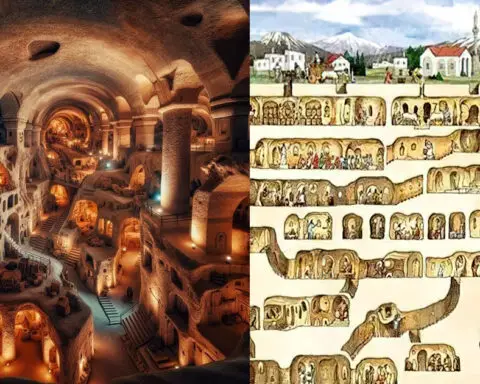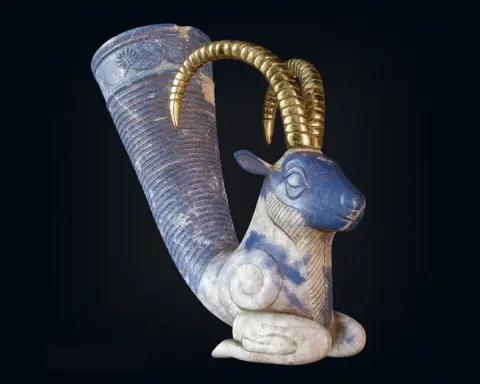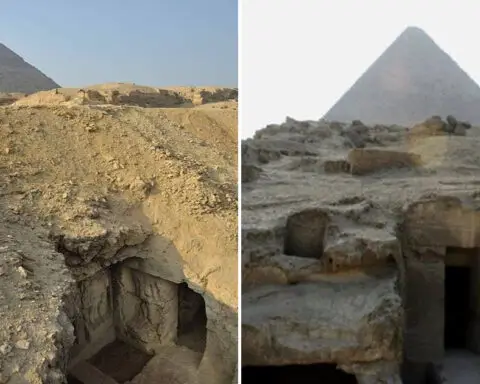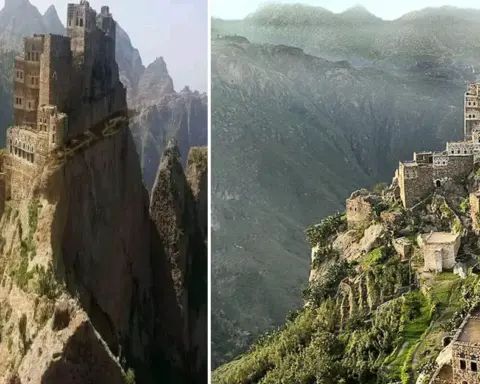Deep within the awe-inspiring Grand Canyon rests the Vishnu Temple, a geological wonder boasting intricate formations and captivating contours. Within this natural masterpiece, whispers have surfaced suggesting a mesmerizing possibility—a theory proposing the existence of a sphinx-like structure nestled at the core of the Vishnu Temple, veiled by the mists of time.
The towering cliffs and weathered features of the Vishnu Temple have prompted speculation among observers who perceive a semblance to Egypt’s iconic Sphinx of Giza. This idea of a potential sphinx once gracing the Grand Canyon’s landscapes opens doors to ponder ancient civilizations and potential interconnections, creating a vivid intersection of history, mythology, and geological wonders.

Imagining a sphinx at the Vishnu Temple invites us to explore where history, myth, and the Earth’s formations might intertwine. While the Egyptian Sphinx embodies the mystique of ancient Egypt, the idea of a similar figure in the American Southwest sparks curiosity about cultural exchanges and the echoes of civilizations across continents.
The speculation surrounding the alleged sphinx-like figure at the Vishnu Temple draws from geological formations and erosion patterns that, to some, resemble the enigmatic visage of the Egyptian Sphinx. Could this geological marvel be a remnant of a forgotten era, where cultures transcended borders and imprinted their legacy on distant lands?
However, despite the allure of this hypothesis, tangible evidence or documented records substantiating the presence of a sphinx at the Vishnu Temple are lacking. The absence of archaeological artifacts or conclusive proof challenges the notion, leaving it within the realm of fascinating speculation rather than established fact.

Delving into the potential existence of a sphinx at the Vishnu Temple calls for rigorous scrutiny and scholarly investigation. It necessitates collaboration between geologists, archaeologists, and historians to unravel the mysteries concealed within the canyon’s geological fabric.
In the absence of undeniable evidence, the concept of a sphinx at the Vishnu Temple remains a captivating hypothesis—an intriguing narrative that sparks wonder and ignites the imagination. It stands as a testament to humanity’s innate curiosity about the obscured chapters of our past, prompting us to envision a world where ancient civilizations might have intertwined in ways yet to be fully understood.
The Vishnu Temple, with its geological allure and suggestive resemblances, embodies the enigmatic nature of history—a canvas where speculation and contemplation entwine, inviting us to peer through the layers of time in pursuit of elusive truths and concealed marvels.
While the canyon’s vistas continue to mesmerize, the hypothetical notion of a sphinx at the Vishnu Temple persists as an enticing possibility—an ode to the enduring allure of ancient mysteries and the perpetual quest to decode the enigmas nested within our world’s storied landscapes.






